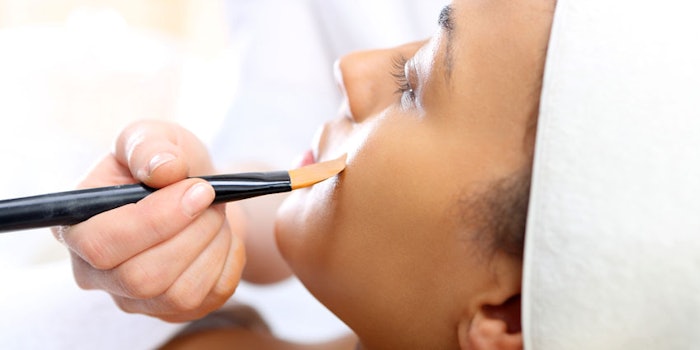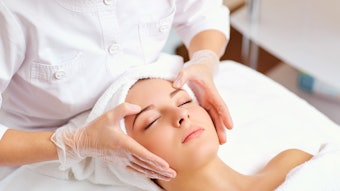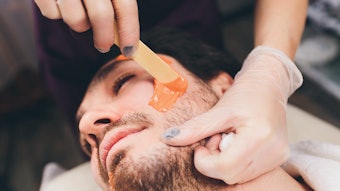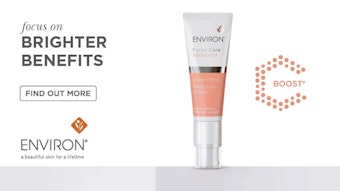
Chemical peels remain some of the most effective, efficient and financially feasible skin care treatments available, and understanding the science behind them allows skin care professionals to most effectively manage, market and take advantage of this powerful, lucrative tool.
Skin, like any material, is subject to wear and tear, chemical and photo degradation, and absorption of chemical pollutants, not to mention microbial invasion. Fortunately, this natural “material” has the benefit of re-building itself through an influx of new cells from the basal layer of the epidermis. However, with age, this constant supply of new cells slows, and a degraded and disorganized skin surface becomes more of the norm. This is where chemical peels—both acid and nonacid—work their magic. Beginning by simply removing the top layer of the epidermis, the skin will exhibit some of its former luster and uniformity, much as the light sanding of an old wooden surface will return some of its finish and surface quality. As a peel works deeper into the epidermis, the lower skin layer loosens and the basal layer of the skin is stimulated to produce new cells. The appearance of new cells can replace aged, oxidized and hyperpigmented skin. The end result is more cellular bulk, offsetting the epidermal thinning that comes with aging; hydrating skin; and improving color uniformity and smoothness.
Peel chemistry
The most common types of chemical peels are acid peels, which work to remove the cells of the top layer of skin’s upper epidermis by breaking weak chemical bonds that hold together the epidermal skin cells, termed “corneocytes” or “keratinocytes.” Depending on the strength, pH and delivery agent of the peel product, upon application, the skin cells delaminate and lift away. (See Figure 1.) As the peel process proceeds, or upon subsequent treatment, it can penetrate further into the thickness of the epidermis to interact and weaken the bonds holding together the cells of the lower layers of the epidermis.
The strength of an acid peel is based on several factors:
- The concentration of the active ingredient;
- The type of peel agent;
- The pH of the product; and
- The delivery system.
The concentration refers to the amount of free acid found in the peel, as determined by an analytical method called titration. As the concentration of the acid increases, the strength increases. This strength is characterized by the pH of the product, a chemical parameter that defines the acidity or basicity of an aqueous solution. The lower the pH of the product, the stronger the acid, which is counterintuitive. By definition, the lower the pH of an acid system, the more it wants to release its hydrogen ion (H+), which can then interact and react with the chemical bonds that hold the skin cells together. Conversely, the higher the pH an acid exhibits, the more the acid will tend to hold its hydrogen ion, and it is considered more basic. As shown in Figure 2, the pH scale shows the range of pH values, with 0 being the most acidic, 7 being neutral and 14 the most basic. Most acid-based chemical peels have pHs ranging from 1.5–4.0.
It is important to remember that stronger is not always better when it comes to peels, as evidenced in the treatment of hyperpigmentation, which can be a challenge to many skin care professionals. Trichloracetic acid (TCA) peels can effectively lift off and remove pigmented skin cells that have progressed through the skin’s natural maturation cycle; however, they can be counterproductive when working with higher Fitzpatrick skin colors or in types where melanocytes are easily triggered due to inflammatory responses in the skin by these aggressive peeling agents. Another approach may be to perform lighter, less aggressive peels that progress over a period of time to achieve better long-term results.
Peel ingredients
For the esthetic practice, there are a wide range of acid and nonacid ingredients available, and many have secondary benefits, such as antibacterial or skin-lightening properties. Esthetic peels are less aggressive than medical peels and act only superficially on the upper epidermis, but they provide the esthetician with more control of treatment results. Esthetic peels include mild enzyme peels, which affect only the upper stratum of the epidermis; acid peels, which target the epidermis from the outer surface inward; and nonacids, such as retinol or retinoic acid (vitamin A derivatives), which target the lower layers of the epidermis to kick start the basal stem cells, and initiate new cell replication that forces cells to the outer surface, thus affecting a natural peel.
Peel systems
The main families of chemical peel systems include the ubiquitous alpha hydroxy acids (AHAs), including glycolic and lactic acid; carboxylic and dicarboxylic acids; beta hydroxy acids (BHAs); and blends with other acids and ingredients. See Common Active Peel Ingredients.
Azelaic peels, based on azelaic acid, a dicarboxylic acid, represent one of several peel acids with multiple benefits. It promotes a mild peel of the upper layer of the epidermis, and it can also offset post-inflammatory hyperpigmentation (PIH), a problem that can plague a peel process, particularly in pigmented skin. Azelaic acid is able to inhibit a key enzyme needed in the skin’s pigmentation process—tyrosinase—slowing excess pigmentation by reducing melanin production. Another mild acid, kojic acid, is also used in skin care products to affect mild peeling while exhibiting strong tyrosinase-inhibition and anti-inflammatory properties.
In addition to preventing hyperpigmentation, some of the acid systems are effective as anti-acne treatments. The antibacterial properties of azelaic acid, particularly at lower pHs, are very effective against skin bacteria often associated with acne, such as propionibacterium. The peeling effect of the acid helps remove the initial sebum/epidermal plug that precedes the acne comedone, but also is effective at suppressing bacteria growth at the site. Salicyclic acid, a BHA with unique oil solubility that common AHAs do not have, is also an effective acne treatment. Mandelic acid, an aromatic keto-acid, has been shown to have both antibacterial and bacteriostatic properties.
Medical peels
By definition, medical peels are peel treatments carried out in a medical spa or physician’s clinic. A medical peel can be characterized as an aggressive peel that may not only penetrate the full thickness of the epidermis, but can also quickly impact the dermis and should be conducted with the oversight of a practicing physician trained in dermatology or plastic surgery. A medical peel is typically used when less aggressive methods are ineffective for treatment of conditions such as profoundly photodamaged, or naturally damaged or scarred skin. They are characterized as medium-to-deep depth peels and are performed under anesthesia. Glycolic acid and TCA peels at higher concentrations are usually classified as medium depth, while phenol peels and modified phenol peels—such as the Gordon-Baker or Hetter formulas—are the most common deep medical peels.
Understanding the nuances
Advances in peel treatments now emphasize both the superficial wounding effect a peel produces, and the benefits of healing and reducing inflammation afterward to improve both immediate and long-term results. Understanding and respecting the tremendous benefits of peels, as well as their potential to harm if applied improperly, is a responsibility of all skin care professionals. Continued education in peel science and hands-on training should be incorporated, as well as learning the impact of a peel on the substructures of skin to help in the understanding of the fine nuances of this powerful treatment technology and allow the skin care professional to continue to provide this service at an exceptional level.











